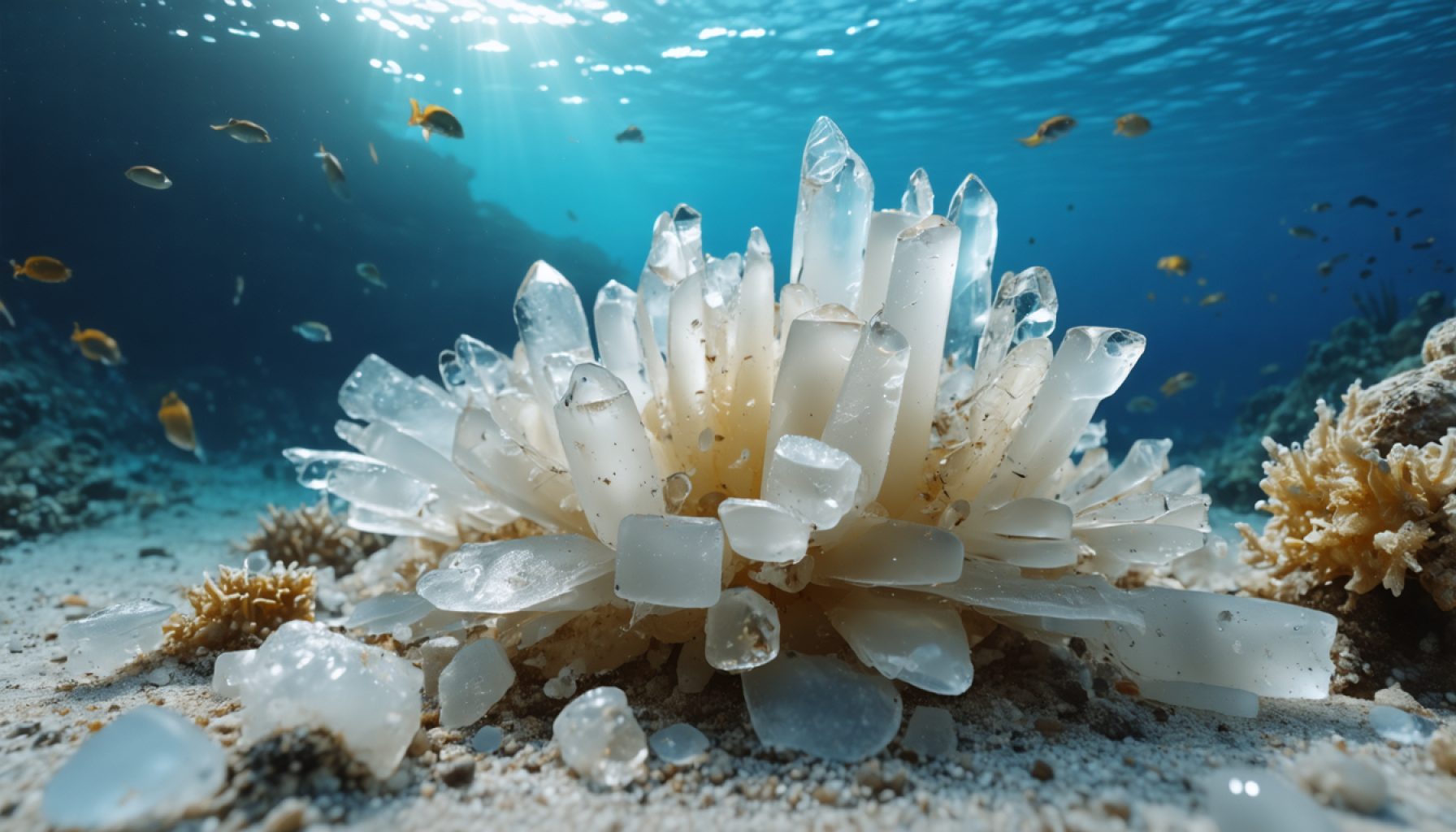- Microplastics, particles smaller than five millimeters, originate from everyday items and infiltrate marine environments via runoff and waste streams.
- These particles attract toxins like heavy metals and are ingested by marine life, causing harm to digestive systems, reproduction, and behavior.
- Microplastic contamination extends beyond oceans, appearing in seafood and other food products, potentially impacting human health.
- Solutions involve innovative biodegradable alternatives, improved waste management, and community efforts toward sustainability.
- A collective commitment to addressing microplastic pollution is crucial to protect the health of marine ecosystems and human populations.
Glimpsing into the azure realms of Earth’s expansive oceans might lull any onlooker into a sense of tranquility. Yet beneath these waves, a silent menace lurks—microplastics. Invisible to the naked eye, these infinitesimal particles weave a web of danger that extends far beyond the ocean floor.
Microplastics, defined as plastic debris smaller than five millimeters, originate from everyday products like clothing fibers, personal care items, and larger broken-down plastics. These particles infiltrate marine environments through runoff and waste streams, a journey that begins with our daily routines. Each wash of polyester clothes sends thousands of fibers into water systems, making microplastics nearly impossible to contain once they slip past conventional treatment facilities.
Floating across ocean gyres, these tiny foes attract toxins such as heavy metals and pollutants. Like insidious confetti, they embed themselves in every crevice of the sea, eventually ingested by marine life. Fish, birds, and even the majestic whales cannot distinguish these filaments from food, leading to dire consequences. The ingestion of microplastics can damage digestive systems, affect reproduction, and even alter behavior, creating a ripple effect throughout the marine food chain.
But the threat extends beyond the waves, moving steadily into our diets and ecosystems. When seafood becomes a conduit, microplastics work their way to our tables. In some studies, traces have been found in salt, honey, and even beer, suggesting that no particle is too small to disrupt human health. These contaminants carry potential risks to the liver, kidneys, and even the endocrine system, although the full impact remains a frontier for ongoing research.
Emerging solutions inspire hope, yet demand a collective commitment. Scientists innovate with biodegradable alternatives and enhance waste management technologies, while communities shift toward sustainable practices. Such proactive measures can stall the cascade of plastics into oceans, breathing life back into compromised ecosystems.
The narrative of microplastics is one of hidden peril and interdependence, reminding us of the profound connection between nature and our daily habits. The challenge demands awareness and action, encouraging us to transform a global issue into a tapestry of small, meaningful changes. It’s a novel chapter we must write collectively, ensuring the blue horizons of our planet remain vibrant and untainted for generations to come.
Unveiling the Hidden Dangers: Microplastics in Our Oceans and Beyond
Microplastics have become a significant environmental concern, infiltrating not just marine ecosystems but also our everyday lives. While the original article sheds light on the presence and impact of microplastics, there are numerous additional insights worth exploring. This comprehensive guide delves into facts, solutions, and actionable steps to address this global concern of microplastics.
How to Combat Microplastics in Our Daily Lives
1. Reduce Single-Use Plastics: Opt for reusable bags, bottles, and containers to minimize plastic waste.
2. Choose Natural Fibers: When purchasing clothing, prioritize garments made from natural fibers such as cotton or wool, which shed fewer microfibers compared to synthetic fibers.
3. Use a Microfiber Filter: Install filters on washing machines to catch microfibers shed during laundry cycles.
4. Support Brands Committed to Sustainability: Buy from companies prioritizing biodegradable packaging and sustainable practices.
5. Participate in Cleanups: Join local beach or river cleanups to help reduce plastic pollution at the source.
Real-World Use Cases
Innovative Solutions: Organizations are developing technology to capture microplastics at wastewater treatment plants. One such method is the use of advanced filtration systems that can trap microplastics before reaching water bodies.
Biodegradable Alternatives: Companies are investing in research to develop plastic alternatives from seaweed or cornstarch, aiming to reduce dependence on traditional plastics.
Market Forecasts & Industry Trends
The global biodegradable plastics market is expected to grow significantly, with a compound annual growth rate (CAGR) predicted at over 15% from 2022 to 2029. This growth is driven by increasing consumer demand for sustainable products and stringent regulations on single-use plastics.
Reviews & Comparisons
Microfiber Laundry Bags: Various brands offer laundry bags designed to catch microfibers. Comparing options like Guppyfriend and Coraball can help consumers choose effective solutions to reduce microfiber pollution during laundry.
Controversies & Limitations
– Biodegradability in Ocean Conditions: While biodegradable plastics offer promise, they may not break down as intended in marine environments due to lower temperatures and lack of microorganisms.
– Recycling Challenges: Mixed-material items can complicate recycling efforts, leading to increased microplastic pollution.
Insights & Predictions
Experts predict that without significant intervention, global plastic pollution could double by 2030. Innovative policies, public awareness, and technological advances are crucial to reversing this trend.
Frequently Asked Questions
Q: How do microplastics affect human health?
A: While research is ongoing, microplastics have been found in human blood and tissue, suggesting a potential risk for organ damage and endocrine disruption.
Q: What are some sustainable alternatives to plastic?
A: Consider using materials like glass, metal, paper, or plant-based bioplastics, which can be more easily degraded and recycled.
Actionable Recommendations
– Advocate for Policy Changes: Support policies that restrict plastic use and enhance waste management infrastructure.
– Educate Others: Spread awareness about microplastics and share knowledge on reducing their impact.
Quick Tips for Immediate Implementation
– Bring a reusable coffee cup when visiting cafes.
– Swap liquid body washes for bar soap to reduce plastic packaging.
– Encourage friends and family to adopt small sustainable changes.
By understanding the breadth of microplastic pollution and implementing these practical steps, we contribute towards a healthier planet. For more information on sustainability initiatives, visit World Wildlife Fund or Greenpeace. Together, we can create a cleaner, safer environment for future generations.














